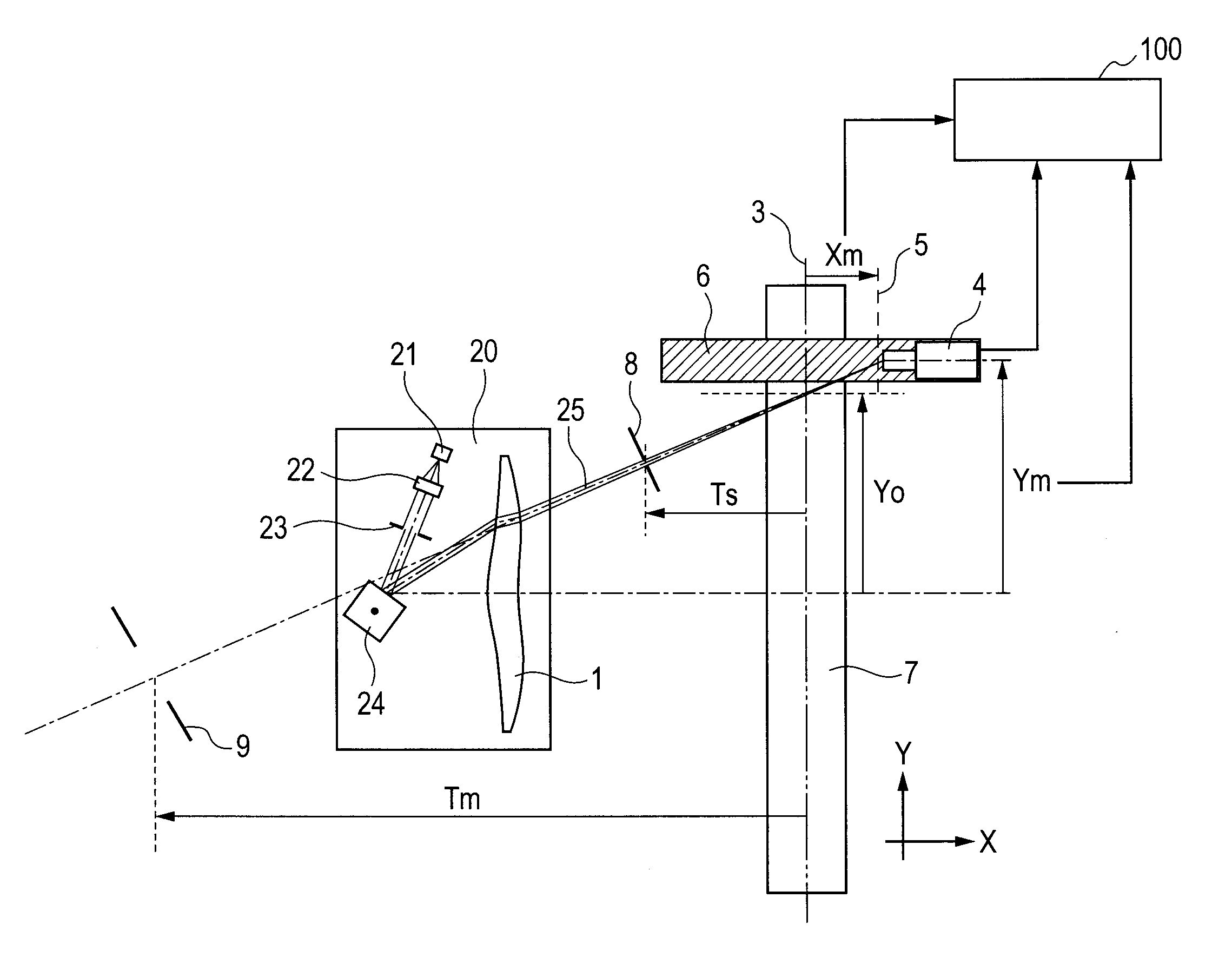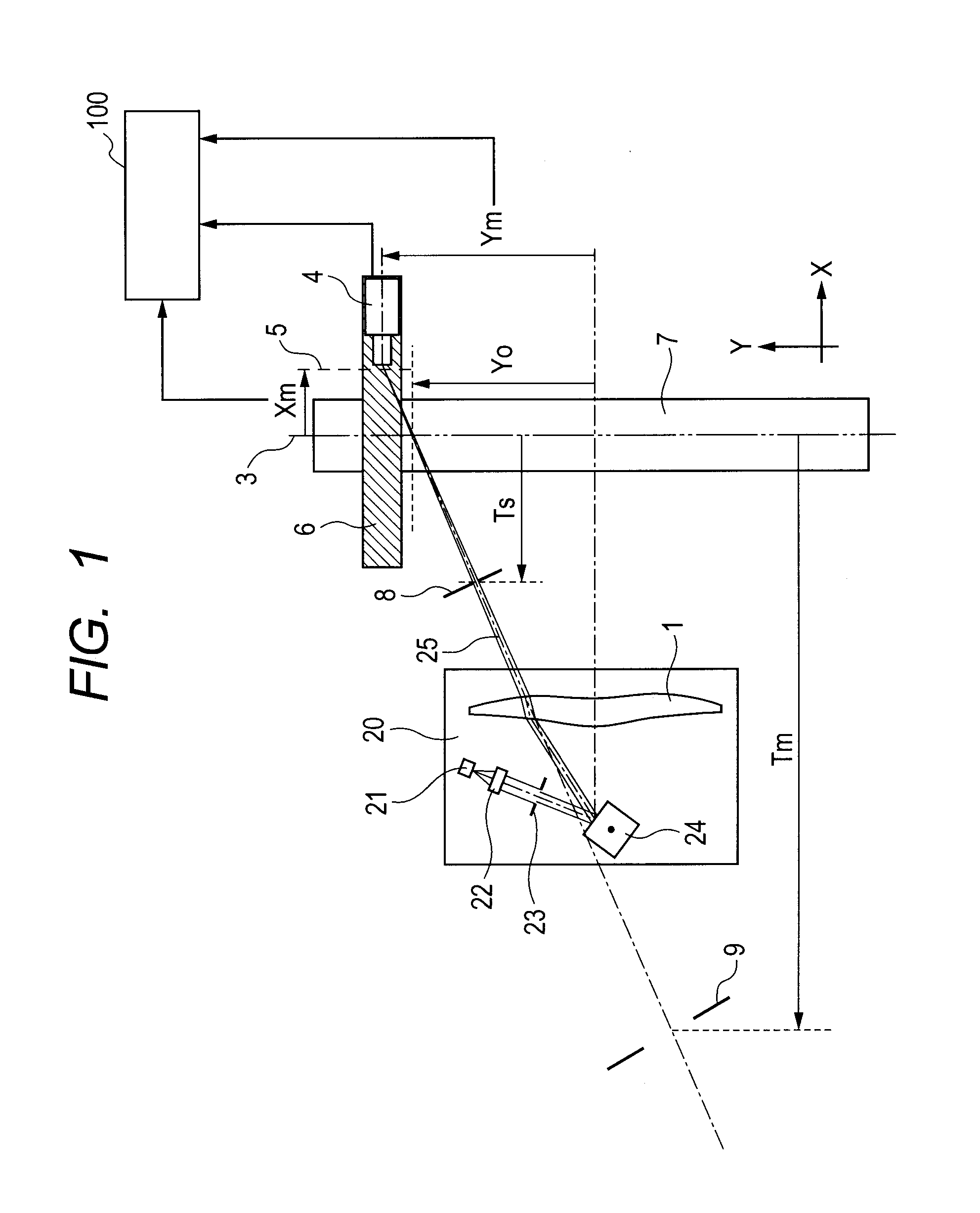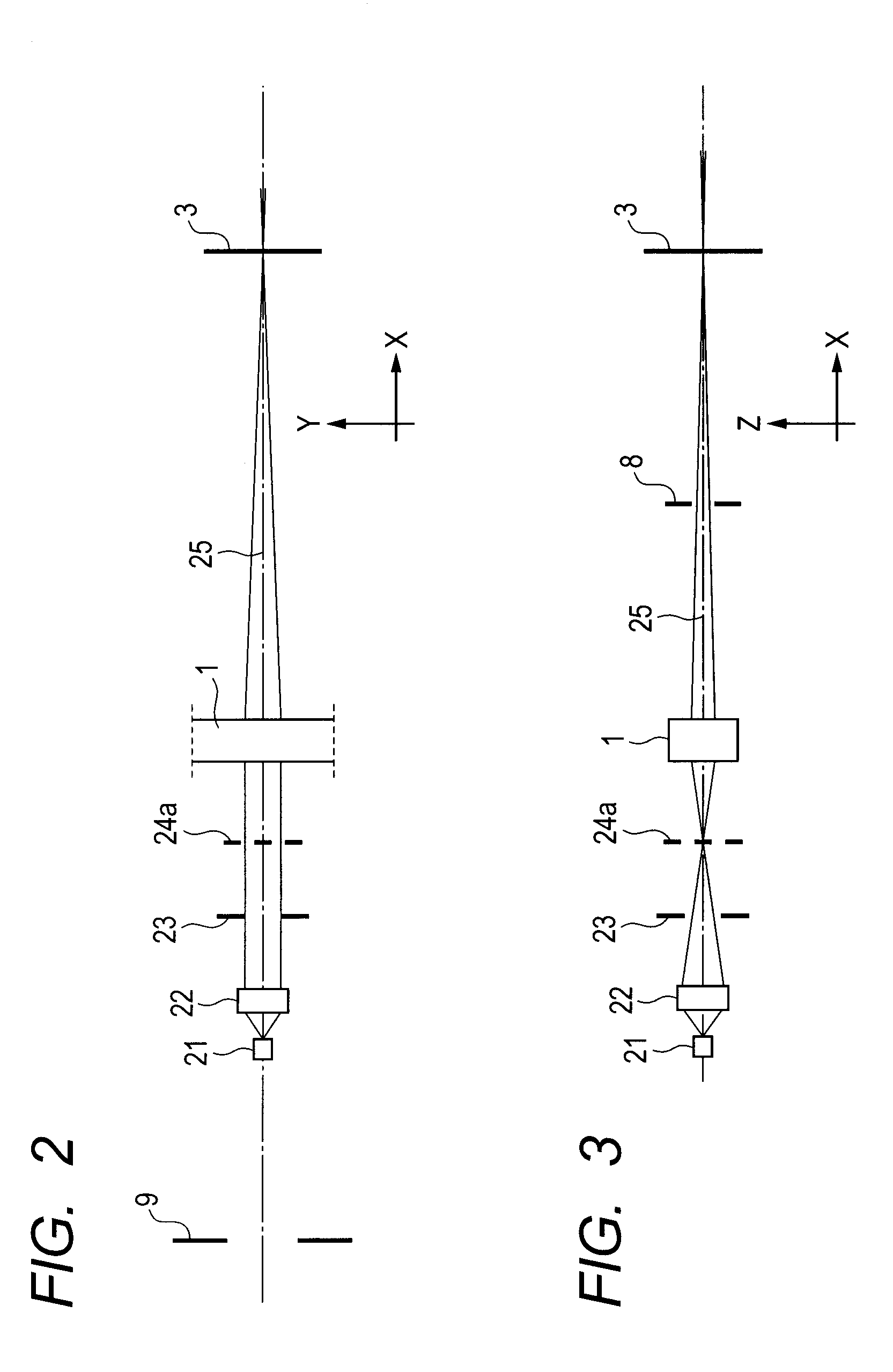Optical characteristic measurement apparatus
a characteristic measurement and optical technology, applied in the direction of measurement devices, instruments, structural/machine measurement, etc., can solve the problem of difficult to determine the true best image plane position
- Summary
- Abstract
- Description
- Claims
- Application Information
AI Technical Summary
Benefits of technology
Problems solved by technology
Method used
Image
Examples
first embodiment
[0023]Overall Configuration of Apparatus
[0024]FIG. 1 illustrates an embodiment of application to an optical characteristic measurement apparatus of a laser scanning optical system. In this diagram, the X direction is referred to as a defocus direction, and the Y direction is referred to as an image height direction. For representation of characteristics of an optical system to be tested, the center line of a beam is referred to as a principal ray. A direction that includes the principal ray and is parallel to the plane of this sheet is referred to as a main scanning direction. A direction perpendicular to the plane of the sheet is referred to as a sub-scanning direction.
[0025]In FIG. 1, a lens 1 for laser scanning is an optical system to be tested. A measurement unit 20 includes the lens 1 for laser scanning and is a unit for measuring optical characteristics. The measurement unit 20 includes a semiconductor laser light source 21, as an object, and a light source optical system 22. ...
second embodiment
[0057]In the first embodiment, the measurement values are the LSF line widths in the main and sub-scanning directions. In this embodiment, the measurement values are the maximum intensities value Py and Pz of LSF in FIG. 4B. In the first embodiment, when the evaluation plane is provided in ahead of and behind of the reference plane as the image plane in the first embodiment to measure the beam width, correction is performed in consideration of the image magnification. On the other hand, in measurement of the light intensity of the beam, correction is performed using a correction coefficient that is a reciprocal of a correction coefficient pertaining to the beam width. This is because, in any defocus state, the integral value of light intensity, i.e. energy, is constant, and the product of the beam width and the light intensity of the beam is maintained constant.
[0058]Provided that Pya and Pza are LSF widths in the main and sub-scanning direction after correction, these values are co...
third embodiment
[0061]In the second embodiment, the measurement value is the maximum intensity of LSF. In this embodiment, the measurement value is the maximum intensity of PSF. In this embodiment, it is sufficient that correction of the light intensity of the beam which is inversely proportional to the correction of the beam diameter in the main and sub-scanning directions is performed simultaneously in the main and sub-scanning directions. That is, provided that Io is the measurement value before correction (maximum intensity of PSF) and Ia is the corrected value after correction,
Ia=(Tm−Xm) / Tm×(Ts−Xm) / Ts×Io. (6)
[0062]It is here provided that the product of the distance Tm in the main scanning direction from the evaluation reference plane to the exit pupil and the distance Ts in the sub-scanning direction from the evaluation reference plane to the exit pupil is Kyz, the distance in the main scanning direction from the exit pupil to the evaluation plane is Ly, and the distance in the sub-scanning ...
PUM
 Login to View More
Login to View More Abstract
Description
Claims
Application Information
 Login to View More
Login to View More - R&D
- Intellectual Property
- Life Sciences
- Materials
- Tech Scout
- Unparalleled Data Quality
- Higher Quality Content
- 60% Fewer Hallucinations
Browse by: Latest US Patents, China's latest patents, Technical Efficacy Thesaurus, Application Domain, Technology Topic, Popular Technical Reports.
© 2025 PatSnap. All rights reserved.Legal|Privacy policy|Modern Slavery Act Transparency Statement|Sitemap|About US| Contact US: help@patsnap.com



